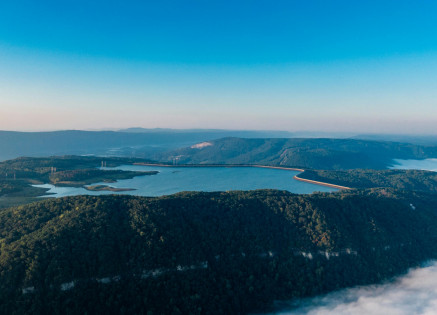Copyright © 2025 lmitac.com All Rights Reserved. Contact - Terms and Conditions - Privacy Policy - Quality Policy - Become an instructor - Vacancies - Sitemap
London Maritime Academy is a trade name for London Premier Groupversion: 2.9.0
London Maritime Academy is a trade name for London Premier Group

Posted on : 7/16/2024, 10:18:31 AM
Hydrodynamics - the captivating science that unravels the mysteries of water in motion. From the gentle flow of a river to the powerful currents of the ocean, this field of study offers a window into the intricate dance of fluids that shape our world.
In this article, we will explore the fascinating world of water and how hydrodynamics affect our lives in ways we can't imagine
But what is hydrodynamics, actually? Hydrodynamics can be described as the branch of fluid mechanics that deals with water and other fluids in motion. Hydraulics is a sub-discipline of fluid mechanics, which studies the properties of water as it moves. Hydrodynamics is the study of water and its movements. These range from the movement of water in rivers, the formation of vortices in the sea, to even the powerful jet of water from the hose in your backyard.
Hydrodynamics: Why Should You Care?
We know you are probably asking yourself why it is important to understand hydrodynamics in the first place. Well, water supports life on the entire planet and is essential to all inhabitants of the Earth.
Hydrodynamics is used in various fields and applications ranging from designing ships that can glide effortlessly across the seas and oceans to forecasting the water behavior during natural disasters such as floods and Tsunamis. It can also assist in giving insights into the effectiveness of other water-related activities such as sporting activities and the movement of aquatic species.
Alright, let’s talk examples. Hydrodynamics appear in various aspects of our day-to-day life and the physical environment.

Next, let’s take a look at the physics principles that drive this interesting field especially when it comes to green maritime innovation, there are several concepts you will need to know.
The Bernoulli’s Principle is one of the notable principles of hydrodynamics. The first principle of fluid mechanics holds that in a flowing liquid, an increase in velocity takes place along with a decrease in pressure or potential energy.
Think about a stream meandering through a pipe. In the place where the diameter of the pipe is constricted, the flowing water velocity increases while pressure decreases. It helps in pipe design, airplane lift, and everything in between since fluids include gases as well!
Second, we have the Continuity equation. This principle has its roots in the principle that mass cannot be created or destroyed in a fluid flow. This implies that the amount of fluid within a pipe has to discharge an equivalent amount of the same fluid, given that there is no loss due to leakage. It is very helpful in hydraulic engineering and environmental disciplines.
These are the rock stars of hydrodynamics. The Navier-Stokes Equations are the equations that describe the motions of fluids by giving the rate at which the velocity field changes. These involve forces such as viscosity and pressure and are applied in forecasting weather, developing cars with better aerodynamics, and even in disease research.
Hydrodynamics is nature’s marvel, and there is no doubt that it plays an important role in making the world a better place. Consider how water carves through rock to make canyons or how droplets of rainwater make a stream or river. Hydrodynamics are all around us and nature is a great reminder of that and it does not hesitate to demonstrate such concepts in all their glory.
Understanding hydrodynamics isn't just for scientists and engineers. It’s for anyone who marvels at the natural world and wants to know more about how it functions. And how best to achieve that knowledge than through marine engineering courses uk.
From designing better boats to understanding climate patterns, the principles of hydrodynamics are all around us. We have a duty to understand and implement those principles beneficially.
So next time you’re sitting by a river or watching ocean waves crash, take a moment to think about the science of water movement. Hydrodynamics isn’t just a fancy term. It’s the key to unlocking the secrets of one of the most vital and abundant resources on our planet.